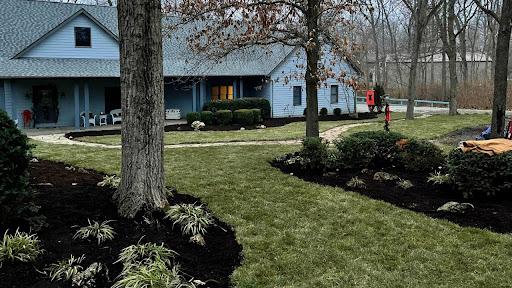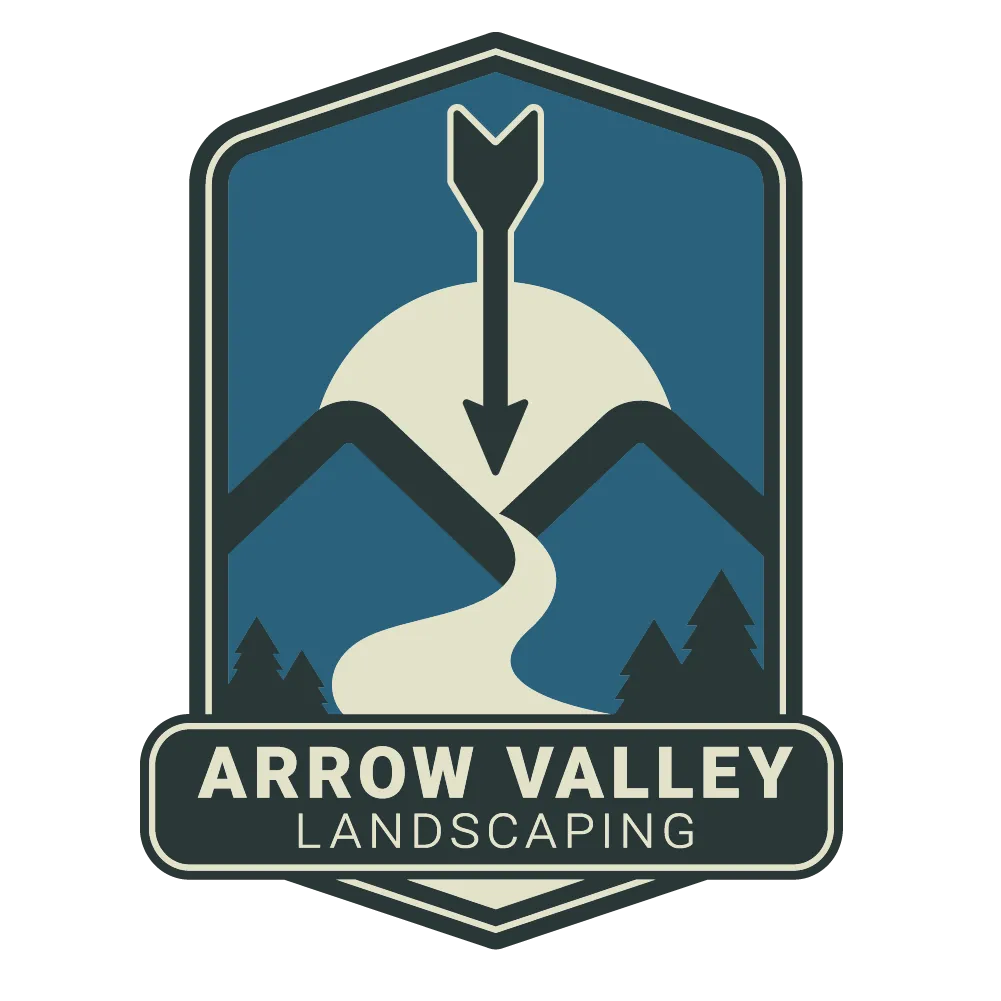Blogs

What Is A Berm In Landscaping?
A berm in landscaping is a raised mound or strip of soil that is used to add visual interest, improve drainage, create privacy, or act as a noise barrier within a landscape design. Adding a berm to your landscape can dramatically transform your outdoor space, offering both functional benefits and aesthetic appeal. A berm is essentially a mound of soil that’s been sculpted into the landscape to create visual interest, guide water flow, or serve as a natural barrier. From adding depth and dimension to controlling runoff, berms are a versatile addition to any yard. Whether you're looking to create privacy, add a focal point, or simply break up the monotony of a flat lawn, berms are an excellent choice.
At Arrow Valley Landscaping, we specialize in designing custom landscapes that incorporate elements like berms to enhance the beauty and functionality of your outdoor living spaces.
Key Takeaways
Definition: A berm is a mound of soil in landscaping used for visual interest, privacy, or functional purposes like water drainage.
Structure: Typically longer than wide, berms are most attractive when asymmetrical and should not exceed 18-24 inches in height to prevent erosion.
Benefits: Berms help with privacy, water management, raised planting areas, and enhancing landscape design.
Construction Tips: Outline the shape with a garden hose, build with soil and organic matter, plant strategically, and finish with mulch to control erosion.
Creative Uses: Use berms for privacy screens, highlight specific plants, create vegetable beds, or integrate seamlessly with existing landscape features.
How to Build a Landscaping Berm
Building a landscaping berm can be a rewarding DIY project with the right approach. Start by deciding on the location and size, using a garden hose to outline the design for a clear visual guide. Remove existing plants, then pile a mixture of soil and organic material to your desired height and shape.
Steps to Build a Berm:
Outline the berm shape with a hose.
Remove grass or plants within the outline.
Pile soil and organic matter to desired height.
Place taller plants at the back, shorter at the top and sides.
Cover with mulch to retain moisture and reduce weeds.
Benefits of Adding a Berm to Your Landscape
Adding a berm to your landscape offers multiple benefits, enhancing both aesthetics and functionality. Berms can manage water flow, direct it away from areas prone to flooding, and serve as natural barriers for privacy or noise reduction. They also create depth, breaking up the flatness of your yard.
Key Benefits:
Improves water drainage and redirects flow.
Enhances privacy and reduces noise.
Adds depth and dimension to flat landscapes.
Provides a platform for showcasing plants.
Berm Landscaping Ideas
Berms are highly versatile and can be adapted to suit your landscape’s needs. One idea is to create a natural privacy screen by planting dense shrubs. For gardeners, berms can serve as elevated garden beds, making maintenance and harvesting easier. Incorporate gentle slopes and varied plantings for a seamless look.
Creative Berm Landscaping Ideas:
Use for privacy screens with tall grasses or shrubs.
Create raised beds for flowers or native plants.
Incorporate vegetables for better drainage and access.
Blend with existing landscape using a gradual slope.
Common Mistakes to Avoid When Building a Berm
Building a berm might seem simple, but certain common mistakes can undermine your efforts. Steep slopes can lead to erosion, and failing to compact soil can result in uneven settling. Additionally, inadequate drainage can harm plant health. Proper planning and material use are essential to avoid these issues.
Mistakes to Avoid:
Creating slopes that are too steep.
Not compacting soil, leading to uneven settling.
Overlooking drainage needs, causing water pooling.
Skipping organic matter, impacting plant growth.
Choosing the Right Plants for Your Berm
Choosing the right plants is crucial for the success and appearance of your berm. Opt for drought-resistant plants if your berm is in a sunny spot, and layer plants by height for visual interest. Evergreens and perennials with deep roots can help stabilize soil and provide year-round appeal.
Planting Tips:
Use drought-resistant varieties for sunny berms.
Layer plants: taller at the back, shorter at the front.
Include evergreens for year-round greenery.
Select plants with deep roots to stabilize soil.
This structured approach keeps the content concise and organized, with each section providing a clear, actionable list to guide the reader through building and enhancing their landscaping berm.
Frequently Asked Questions About Berms in Landscaping
What is a berm around a house?
A berm around a house is a raised mound of soil used to direct water away from the foundation, enhance privacy, or add visual interest to the landscape.
What are berms also known as?
Berms are also known as mounds, embankments, or raised beds, depending on their use and design in the landscape.
What is the difference between a berm and an embankment?
A berm is generally a smaller, rounded mound used in landscaping, while an embankment is a larger, often steeper slope used for structural support or flood control.
What are the different types of berms?
Types of berms include noise-reducing berms, decorative planting berms, privacy berms, and water-diverting berms, each serving specific landscape functions.
What is the best material for a berm?
The best materials for a berm include a mixture of soil, sand, compost, and organic matter. These materials provide stability, good drainage, and a suitable growing medium for plants.
Transform Your Landscape with Arrow Valley Landscaping
Enhancing your landscape with a berm can bring new dimensions of beauty and functionality to your outdoor space. By integrating berms into your landscape design, you not only create visual interest but also improve water drainage and create a more dynamic environment. Whether for privacy, planting, or simply to add some variety, berms offer a versatile solution that can be tailored to any yard.
Contact us today to schedule a consultation and start your journey towards a beautifully enhanced outdoor space. Let Arrow Valley Landscaping bring your dream landscape to life—call us now!

With years of experience serving Illinois, we’re proud to be the trusted choice for a professional and high quality landscaping.
Contact Us
Phone:
Email:
Address
© 2025 Arrow Valley Landscape ltd. All Rights Reserved. Privacy Policy. Web Design by Fused Media



